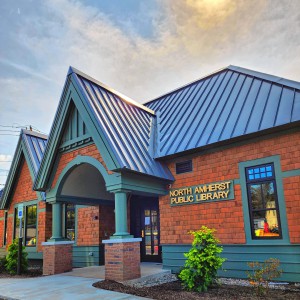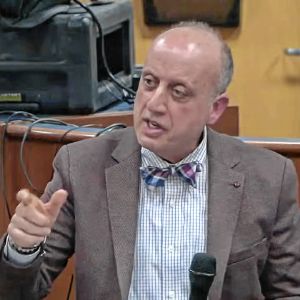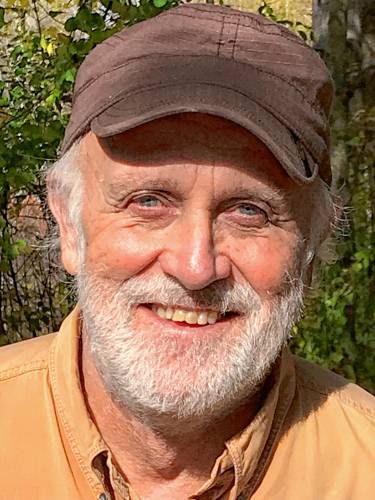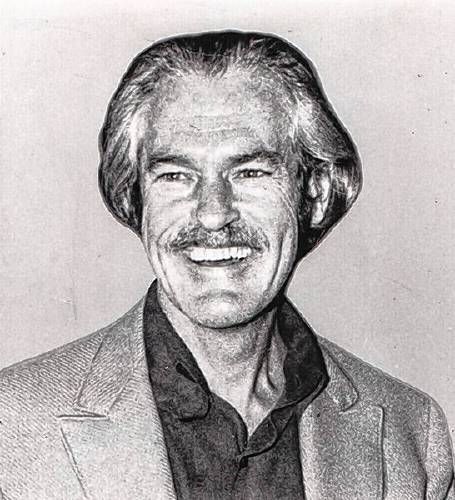Around and About with Richard McCarthy: Turn on, tune in, drop out: Exploring Timothy Leary’s Pioneer Valley roots
| Published: 02-29-2024 2:18 PM |
I suspect a fair number of readers are aware who Timothy Leary was, and more still have heard his name as part of the lexicon of popular culture. For those who do not know, he was one of the more famous (or infamous, depending on your perspective) figures of the 1960s, as what might be called the “Johnny Appleseed of LSD”.
To give an idea how renowned (or, again, notorious) he was during those times, I’ll offer the following words from “The Seeker,” a song by the ‘60s group, The Who: “I asked Bobby Dylan / I asked the Beatles / I asked Timothy Leary / But he couldn’t help me either”.
I am not writing this column to praise or condemn Leary, but rather to point out that his roots were right here in the Pioneer Valley. He was born and raised in Springfield. Indeed, his childhood home was a little under 19 miles from the present location of the Daily Hampshire Gazette offices.
I, too, was born and raised in Springfield, 28 years after Leary. My childhood home was a little over a mile from his, and we graduated from the same high school. This geographical connection was what drew me to Robert Greenfield’s biography of Leary. In it, I learned that although Leary and I shared an Irish heritage, he was what we of Hibernian descent call “lace curtain Irish,” while I was of the working class variety. He was the only child of a father who was a dentist with a substantial practice, his grandfather was a successful and prominent businessman, and his great-uncle was a monsignor in the local Catholic diocese.
The curtains on his boyhood home may have been made of lace, but, like many houses with fine curtains, what went on behind them was neither elegant nor pretty. Leary’s father drank himself out of his dental practice and deserted the family when Timothy was 14 years old.
His father was not the only one of his relatives to paint outside the lines. I think that the following quote by one of Leary’s cousins is quite interesting: “The Learys were a colorful and fascinating Irish clan and yet … where Tim saw amusing eccentricity, flamboyance, and adventure, I saw loss of control, irresponsible behavior and too much heartache … the foolishness of one generation creating havoc and ultimately tragic fallout for those who followed.”
Leary entered Springfield Classical High School in the fall of 1934. Theodore Geisel, later known as Dr. Suess, graduated from Classical before Leary’s time there, and the historian William Manchester was a year behind Leary. The longtime principal of the school was William G. Hill, an educator of great dedication and stature. Hill had a school motto that he constantly urged his students to commit to memory and live by: “No one has the right to do that which if everyone did would destroy society.”
There is a picture of Timothy Leary on the front page of the school newspaper, The Classical Recorder, accompanying an article about his being selected as the paper’s editor-in-chief for his senior year. He has a crew cut and is wearing a sport coat with a dotted tie and a white shirt with a spread collar.
Article continues after...
Yesterday's Most Read Articles
 A Waterfront revival: Two years after buying closed tavern, Holyoke couple set to open new event venue
A Waterfront revival: Two years after buying closed tavern, Holyoke couple set to open new event venue
 ‘We can just be who we are’: Thousands show support for LGBTQ community at Hampshire Pride
‘We can just be who we are’: Thousands show support for LGBTQ community at Hampshire Pride
 3-unit, 10-bed house in backyard called too much for Amherst historic district
3-unit, 10-bed house in backyard called too much for Amherst historic district
 ‘Home away from home’: North Amherst Library officially dedicated, as anonymous donor of $1.7M revealed
‘Home away from home’: North Amherst Library officially dedicated, as anonymous donor of $1.7M revealed
 UMass basketball: Matt Cross announces he’s transferring to SMU for final year of eligibility
UMass basketball: Matt Cross announces he’s transferring to SMU for final year of eligibility
 Retired superintendent to lead Hampshire Regional Schools on interim basis while search for permanent boss continues
Retired superintendent to lead Hampshire Regional Schools on interim basis while search for permanent boss continues
Leary’s hair may have been short on the outside, but it was already growing long inside his head. Greenfield describes him as “brash,” sometimes wearing a porkpie hat to class. He had teamed up with who Leary described in later life as “the wildest, sexiest, coolest girl in New England,” and the two of them had become what Greenfield describes as “popular stars in the adolescent social life.” Leary was president of the student senate, but he skipped more days in his senior year than any other student in his class.
As editor-in-chief of the Recorder, Leary wrote what he described in later life as “a particularly fiery editorial suggesting that (Hill’s beloved school motto) was totalitarian and un-American in glorifying the welfare of the state over the rights of the individual.”
When I read that short quote of Leary’s, summarizing his oppositional editorial, I found myself thinking that it was a foreshadowing of things to come, that though it was written when he was 18 years old in the late 1930s, it could have been part of the lyrics for an anthem of the 1960s.
Timothy Leary would leave the circumference of Springfield soon after that editorial was written to go off to college. I’ve always found it interesting that, as I suspect few readers know, the three colleges he matriculated at as an undergraduate were, in chronological order, Holy Cross in Worcester, West Point (that’s right, I said West Point, as in United States Military Academy!), and the University of Alabama, from which he graduated. Try as I might,I don’t know that I could come up with three colleges that, each in its own way, had a culture more opposite to hippiedom.
By the 1960s, when he first tried psychedelics and stepped into the limelight promulgating their use, he was a lecturer in psychology at Harvard, and that is the college with which he is associated in the popular consciousness.
Once Leary left Springfield in the fall of 1938, he never settled in his hometown again. The seeds of who he was had been planted in the Pioneer Valley, and, for better or worse, he now belonged to the world.
Amherst resident Richard McCarthy, a longtime columnist at the Springfield Republican, writes a monthly column for the Gazette.



 Easthampton author Emily Nagoski has done the research: It’s OK to love your body
Easthampton author Emily Nagoski has done the research: It’s OK to love your body Earth Matters: Honoring a local hero: After 40 years, Hitchcock Center bids farewell to educator and creative leader, Colleen Kelley
Earth Matters: Honoring a local hero: After 40 years, Hitchcock Center bids farewell to educator and creative leader, Colleen Kelley Valley Bounty: Delivering local food onto students’ plates: Marty’s Local connects farms to businesses
Valley Bounty: Delivering local food onto students’ plates: Marty’s Local connects farms to businesses Let’s Talk Relationships: Breaking up is hard to do: These tools can help it feel easier
Let’s Talk Relationships: Breaking up is hard to do: These tools can help it feel easier
